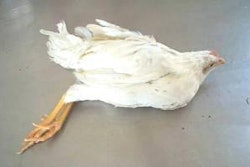We have witnessed a gratifying restoration in the UB price from early November onwards. There are a number of reasons for this welcome circumstance. These include a reduction in the frequency and intensity of press releases by the FDA. After all they received their requests from Congress (“sort of”) and there have been no further newsworthy outbreaks or recalls. As noted in a recent press report, the public has a short memory. A few events such as the Wikileaks disclosures, political grandstanding and the odd murder or two soon dispel media interest.
The roller coaster price fluctuations since mid-August are unprecedented and fortunately have attained projected levels for December albeit with losses of over $150 million as a result of post-recall price reduction. Data in the review of industry statistics confirm that close to 3 million hens have been depleted especially in Iowa and Indiana. Industry observers suggest that the figure may be closer to disposal of 4 million hens since August and in addition the output of at least 2 million hens infected with SE has been diverted from the shell market. This is probably the major
factor responsible for the restoration in price since late October.
Actual consumption of generic eggs was severely impacted by the recall and has not yet recovered to predicted seasonal levels. The rise in price has more to do with disequilibrium in supply and demand rather than positive publicity. It is however acknowledged that the efforts of the AEB and the UEP with regard to press statements were ultimately beneficial especially in countering the self-serving, inflammatory and inappropriate premature press releases concerning the Iowa situation by the FDA.
In retrospect, it would have been better to have introduced a comprehensive and durable SE prevention program such as that mandated by a producer of a nationally distributed specialty branded range of eggs four years ago. It is inevitable that operations with endemic infection of their in-line complexes attributed to cost-related neglect of biosecurity, rodent suppression and vaccination would have fallen victim to the FDA Final Rule. By following a “don’t look until it’s too late to have to do anything” program, some producers will now have to face the reality of dealing with repetitive SE environmental positive findings as each of their flocks attains 45 weeks.
If and when the FDA adopt or mandate the sensitive PCR assay, especially for egg pools, the impact on these units will be even more pronounced. The low sensitivity of environmental swabbing coupled with inherent operator bias in the BAM procedure will continue to generate false negative assays. Hopefully aggressive vaccination and maintaining a cold chain together with appropriate handling and preparation of eggs, especially at the institutional level, will confine the incidence rate of SE outbreaks in consumers despite the fact that SE is more prevalent in high-rise, in-line units than we would wish.
The U.S. industry will hopefully emerge from this setback as a stronger commodity group provided that realism and good intentions prevail. If the UEP and their membership fail to implement
rapid and effective action to suppress and eventually eradicate SE, the results could be severe from regulatory and financial perspectives.
It is hoped that the coming 2011 will see progress in resolution of the SE problem, restoration of consumer confidence and enhanced profitability. A favorable financial situation will encourage
investment in upgraded structural and operational biosecurity and other preventive measures which will benefit all stakeholders.


















